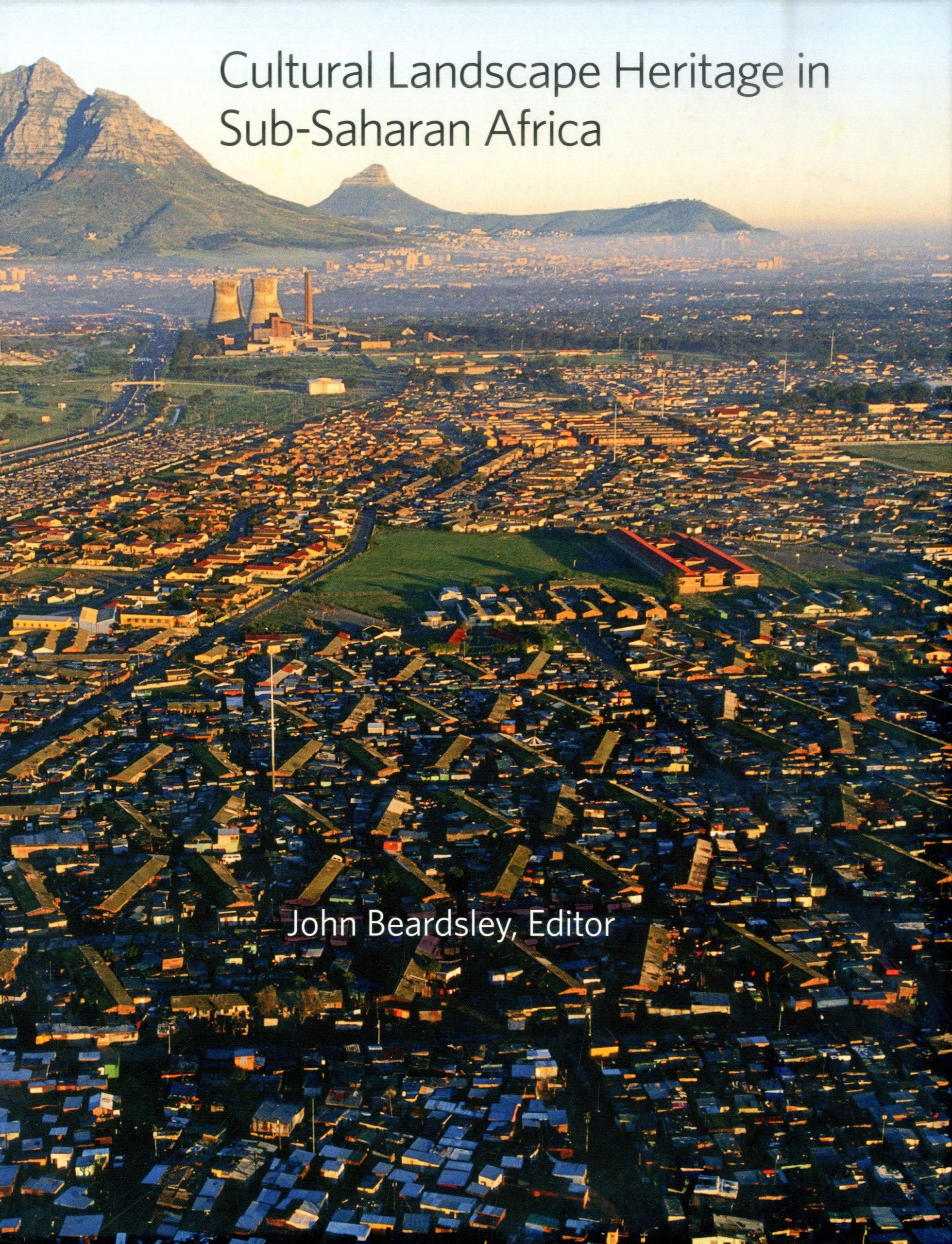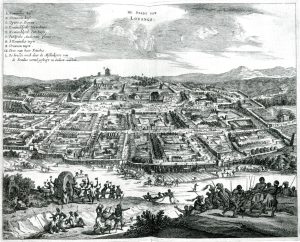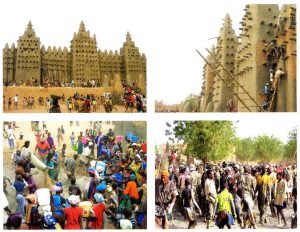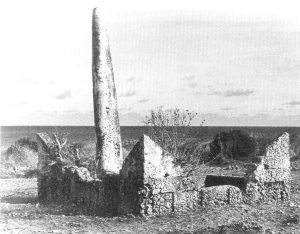John Beardsley
Harvard University Press


Cultural Landscape Heritage in Sub-Saharan Africa is essential reading for any landscape scholar interested in contemporary discussions about diversity and decolonization. The product of a Dumbarton Oaks conference convened in response to the absence of scholarship on Africa’s Indigenous landscapes, the book raises broad issues relevant to other places where settler cultures have suppressed, obscured, and ignored the landscape practices of Aboriginal Peoples. Its essays explore specific cases that, in aggregate, speak to general themes: the reasons that colonizers denied value to Indigenous Peoples and the places they made, the sophistication and complexity of what was overlooked and erased, and the thorny persistence of colonial thought models in the negotiation of the present and the future.
Editor John Beardsley’s introduction to the volume calls out the notable absence of sub-Saharan Africa from the canon of landscape history. Despite interest in settlers’ images of nature and in the colonial environments they created, “both art history and landscape studies have had surprisingly little to say on the subject of outdoor spaces created by and for Africans themselves” (1). Grey Gundaker’s historiographic essay offers an explanation of that vacuum’s origins in the slave trade. Africans—and the places they created and inhabited—needed to be seen as valueless in order to be subjugated. Later, the establishment of European colonies and the attendant extraction of resources, dispossession of Indigenous Peoples, and construction of Western-style environments perpetuated and extended white settlers’ reasons to think of the landscape as empty and of blackness as a sign of primitiveness. The Eurocentric disciplines of landscape architecture and landscape history have left out black Africans partly because of overt racism and partly because of differences in values: the fractal, participatory, process-driven landscapes that African societies created simply didn’t register in a Western design culture committed to universal order, linear time, authorial voice, and the privileging of the individual view.
Coming to terms with these gaps in understanding, past and present, isn’t simple. Reading African cultural landscapes means reckoning with their difficult historical, political, and sociological contexts and recognizing the diversity of peoples, cultures, and environments across the continent. The nature of the problem requires analysis through different disciplines and from different vantage points. Reconciliation (or perhaps more accurately, conciliation) means considering and negotiating the heterogeneous viewpoints of Africans, both blacks and whites, and Westerners. Part of what makes this volume so valuable is the range of its contributions, which extends far beyond the conventional boundaries of landscape history; it includes work from scholars in architecture, landscape architecture, anthropology, ethnography, art history, and geography. The essays vary widely in their specific content, but together they point toward consistent issues.

For one, the colonial project gave Europeans incentives to deny and misinterpret evidence of sophisticated cultural landscapes. The range of case studies on this topic extends from Sandy Prita Meier’s essay on Swahili coastal peoples’ stone monuments—artifacts of cosmopolitan city-states built along global trade routes—to Neil Norman’s piece on the palace gardens of the Gbe region—royal sites of display, connoisseurship, and trade funded by taxing European and African traders. Innocent Pikirayi’s essay on the colonial misinterpretation (and postcolonial reclamation) of the city of Great Zimbabwe offers a particularly poignant story. Developed early in the first millennium CE, at the same time as many other urban trading centers, the city’s peak population in the fourteenth and fifteenth centuries was similar to preindustrial London. Great Zimbabwe declined in the sixteenth century; its traces, discovered by a German geologist in 1871, were claimed for the West as the work of a lost civilization of Arabs or Phoenicians. The site was cast as a European monument surrounded by European colonists until the 1950s, when accurate archaeological investigation confirmed its African origins, and it became a rallying point for black nationalists.

A number of the volume’s essays explain how African precolonial and Indigenous cultures know, value, and transform landscapes in ways that are inherently different from and historically ignored by Westerners; often, the dynamic practices and relationships of cultivation and inhabitation—and their ecological traces—are more important than the creation of fixed form. Randall Bird’s essay on the landscapes of central Madagascar focuses on the power of ancestral lands to structure kinship, social position, and shared memory. Michael Sheridan and Akinwumi Ogundiran discuss sacred groves (across the continent and in Nigeria, respectively) as evolving expressions of gender relations, social hierarchies, and political communities that need to be understood over time and through plural lenses. Paul Lane describes why and how the nomadic peoples of East Africa have assigned meaning to paths rather than to places: mobility, an adaptive strategy to deal with the spatial and temporal variation of resources, has given rise to a culture in which journeys across the land become the centers of social memory and personal biography. People’s connections to the landscape emerge over time, through movement, and because of rights of use rather than through the constant inhabitation or fixed ownership of a particular spot.
This book is fundamentally concerned with the past as it relates to the present and future, and the essays it contains shed light on the many ways in which colonial infrastructure, both physical and social, continues to color postcolonial conversations about African landscapes. For example, Western ideas about heritage preservation and environmental conservation tend not to suit the multi-scalar, dynamic landscapes and landscape traditions of Africans. Charlotte Joy’s discussion of the UNESCO designation at Djenné, a mud brick city in Mali, illuminates the tension between traditional practices that connect people to places and standardized international guidelines for heritage preservation and tourism: agency guidelines were too reductive to account for the complexity of the relationships between cultural behaviors and material constructions. Maano Ramutsindela’s essay addresses ways in which the congruent definition of trans-frontier conservation areas and cultural landscapes has shifted priorities from people to wildlife. In some cases, the interests of powerful conservation groups dominate over the welfare of local people; in others, government fears that a tribe would make land claims across national borders has led to the removal of people from super-parks and perpetuated the colonial image of the continent as wild and empty.

Figure 3. Crépissage of the Great Mosque before the Aga Khan Trust for Culture restoration project, Djenné, 2005. Collage of photographs by Charlotte Joy. In Charlotte Joy, “Cultural Landscapes in Mali,” 64.
Several of the book’s essays describe situations where colonial borders have produced conflict between states and clans, and others illuminate circumstances whose history, present, and future are contested by colonial, postcolonial, and local constituencies. Jeremy Foster explains how Table Mountain, at the Cape of Good Hope, has significance as an urban park, a biodiversity hotspot, and a mandated site for the creation of socially just public spaces. Its diverse constituents want things that are not always reconcilable: open access, Indigenous narratives, bourgeois aesthetic expectations, the winning of traditional livelihoods, tourism, and socially unsanctioned behavior. Writing on the politics of rain in Zimbabwe, Joost Fontein explains that even the weather report is culturally charged. Water is an index of power both for the state, which seeks to control it in relation to land use and tenure, and for spiritual practitioners, who see drought as a sign that ancestors are displeased at the exclusion of traditional knowledge from contemporary governance.

Why read this book, and why now? To my mind, the fascinating window it offers into the specific circumstances of Africa is only the first reason. Writing from Canada, where we are struggling toward reconciliation with Indigenous Peoples whose cultures and connections to the landscape have been subject to the long-term structural violence of colonization, I’m struck by the aptness of the questions the essays raise. How, for instance, can and should today’s society recognize and make restitution for the disruption of precolonial relationships to the land? How do colonial structures persist, and how can they be brought into line with Indigenous ways of knowing and inhabiting places? How can people of settler origin learn to read and value the complexity of Indigenous landscapes? These are not optional questions for a society that values justice.

The ambition and intention of Cultural Landscape Heritage in Sub-Saharan Africa are admirable. Most of the existing literature on sub-Saharan landscapes issues from anthropology and archaeology, and publications concerned more directly with cultural landscape issues have been focused on narrowly defined subjects. This volume’s use of a cultural landscape framework to explore wide-ranging topics breaks new ground. It will serve as an excellent introduction to the area as further scholarship emerges, and it represents an important step toward a broad disciplinary conversation about decolonization. But it’s not the last word: produced by an American institution, directed toward English-speaking academic audiences, written by scholars based in Africa, the West, and in between, its balance still tips toward whites and Westerners. To make that observation is not an indictment. It’s a reminder of the complexity of the endeavor.
Jane Wolff is an associate professor at the John H. Daniels Faculty of Architecture, Landscape, and Design, University of Toronto.
How to Cite This: Wolff, Jane. Review of Cultural Landscape Heritage in Sub-Saharan Africa, by John Beardsley. JAE Online. January 10, 2020. http://www.jaeonline.org/articles/review/cultural-landscape-heritage-sub-saharan-africa#/.






